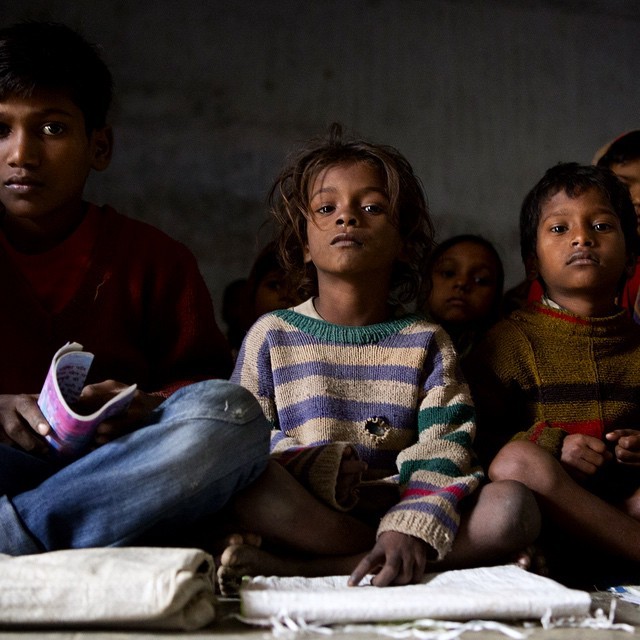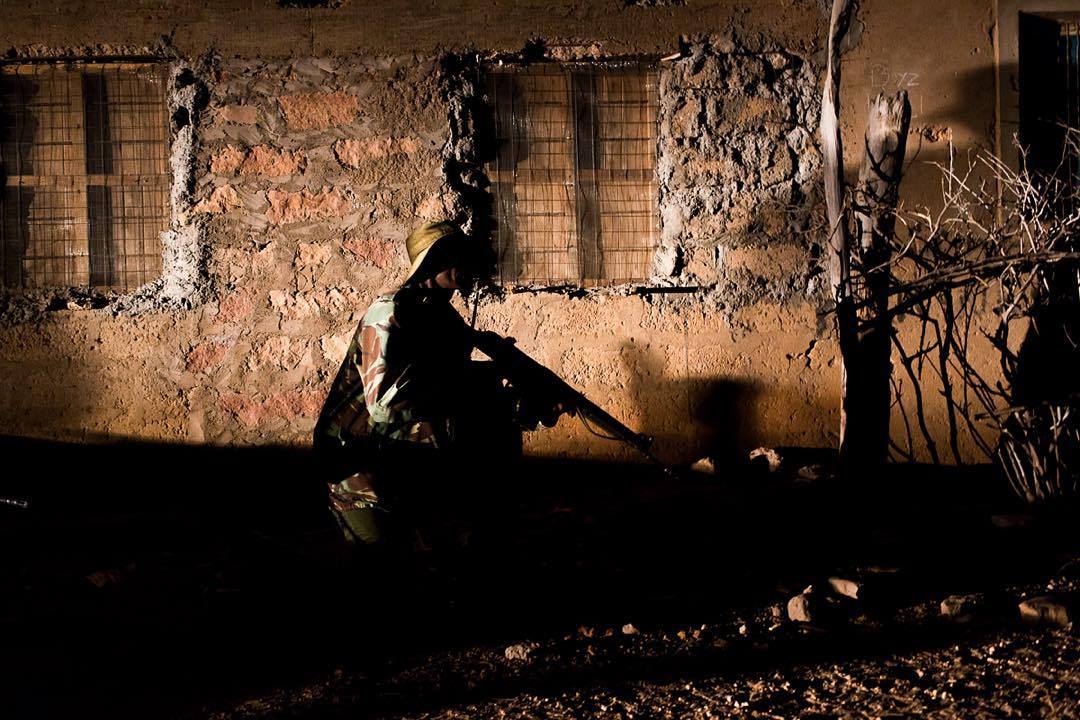Interns Elana Dure and Seiler Smith look back over a year of Field Notes and compile some of their favorites.
SEILER'S FAVORITES

Image by Wes Enzinna—"Kurdish Syria: A Dream of Secular Utopia in ISIS' Backyard"
Wes Enzinna's photograph brings to light the ongoing quagmire of al-Assad's Syria, where regime stronghold can exist embalmed by Kurdish forces controlling the city. One Kurdish leader explains it thus, “As long as a handful of Assad’s troops are here,” he said, “then Assad can pretend he hasn’t completely lost control of this region. His men’s presence are also a guarantee that regime planes won’t barrel bomb us.” The image was taken with an iPhone, showing that it doesn’t take a fancy camera to get a great shot.

Image by Laura Bassett. "Unsafe Abortion in Kenya and the Ripple Effects of U.S. Foreign Aid Policy"
The disgust expressed by the doctor is in stark comparison to his tall and proud demeanor. He stands in his clinic in Kenya, where he once performed abortions illegally to women suffering medical emergencies. He was later convicted of murder for those abortions. Though wronged by his society, he continues to play an integral role as healthcare provider for the community. The medical equipment around him also tells a story. One which demonstrates the progress that remains for Kenya to emerge fully as a developed nation.

Image by Sarah Weiser—"India: Grappling with the Legacy of 'The Population Bomb"
The darkness of the photo and the unrelenting gaze of the children paints a grim outlook for the future of these children in Bihar, where few graduate and illiteracy is high.

Image by Rachel Oswald—"The Return of Cold War Nuclear Fears"
This picture seems incorrigibly funny, such that it's easy to forget how wildly popular in Russia Vladimir Putin is. In the U.S. and elsewhere he is the butt of many jokes, but in Russia, he is worshiped as a celebrity. He's the subject of adulatory songs and a comic book hero; even a vodka bears his name.

Image by Sam Knight—"The Dream of REDD"
This ritual tribal celebration, known as a sing-sing, was performed in the village of Igai, Papua New Guinea, in celebration of the village receiving its first lightbulb. It was the first time that Igai's residents had benefited directly from the sale of carbon credits offset by their forests. In the background, children can be seen wearing contemporary clothes. It is neat to witness the people of Igai maintaining cultural traditions in the face of modernity and provides acute juxtaposition for the challenge faced by many societies.
ELANA'S FAVORITES

Image by Veejay Villafranca—"HIV in the Philippines: State of Emergency"
Everything about this photo speaks to the human heart. The subjects’ expressions of faith-driven contemplation project the fragile nature of their work caring for children orphaned by HIV and AIDS. Even the somber tones of the image’s color palette reflect the day to day challenges this couple faces as they nurture children affected by HIV. The stigmatization of HIV is real—as the couple knows firsthand—but they hope to shield their children from such discrimination.

Image by Uri Blau—"From the U.S. to Israel: Follow the Money"
I keep returning to this photo, wondering what it is about the image that pulls me in. It’s not the picture’s contrast of bright blue hues against earthy, subtle tones nor is it Blau’s vantage point, which allows us to see the Israeli landscape for miles. The textured pattern of telephone wires along the upper half of the image isn’t what grabs me either. Each of the aforementioned is only a piece in the puzzle, creating an overarching mood of serenity and calmness. In truth, I’m perplexed by the fact that a scene as peaceful and quiet as this one can also be a source of such conflict and pain. This comes to show how complicated the issue of land rights really is.

Image by Will Swanson with Ariel Zirulnick—"Kenya Abandons the Northeast to Al Shabab"
Light is the key element in this image, adding a mood that signifies the danger surrounding this lone policeman. The Kenyan Police Reserves, a locally recruited paramilitary force, has stationed itself along the country’s northeast border in an effort to secure the unstable area against al Shabaab. In the past, al Shabaab militants have ambushed police night patrols. Pulitzer Center grantee Ariel Zirulnick and photojournalist Will Swanson investigate the success of Kenya’s new security strategy among these volatile communities.

Image by Andreea Campeanu—"What Happened on Tarajal Beach?"
On February 7, 2014, 300 people rushed a fence dividing Morocco from Spain. At least 14 people died and border police now face charges of murder. Bakari, a participant in the border crossing attempt, said many people died around him. He and others were in the water when Guardia Civil, the Spanish military force, shot rubber teargas and bullets.
Although still in Morocco, Bakari hopes to one day immigrate to Europe. Like many others, he seeks work opportunities and economic freedom. This image tells his story as well as emphasizes the fact that until Bakari is able to cross the border, he will continue to live in difficult conditions with the hope of eventually having a better future.

Image by Yana Paskova—"Cuba in Flux"
The juxtaposition of artist Arístides Hernández and his politically vocal masterpiece is a beautiful illustration of creative life in Cuba. Artists on the island have been pressured to sanitize their artwork from political and social issues, but Hernández chose to speak the truth with his painting, which depicts the possible bidirectional paranoia resulting from the future melding of Cuban and American culture. It’s as if he is saying “What am I to do?” with his expression and shrug.
See more from our grantees at Pulitzer Field Notes.
